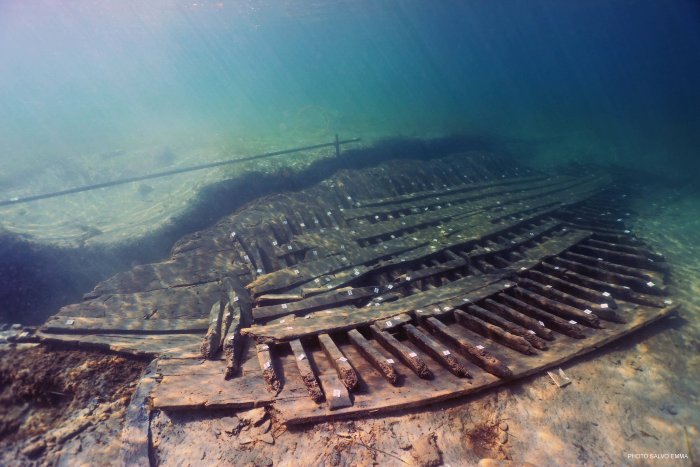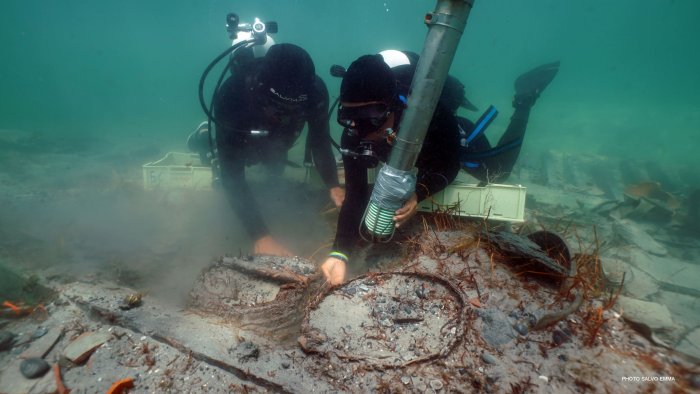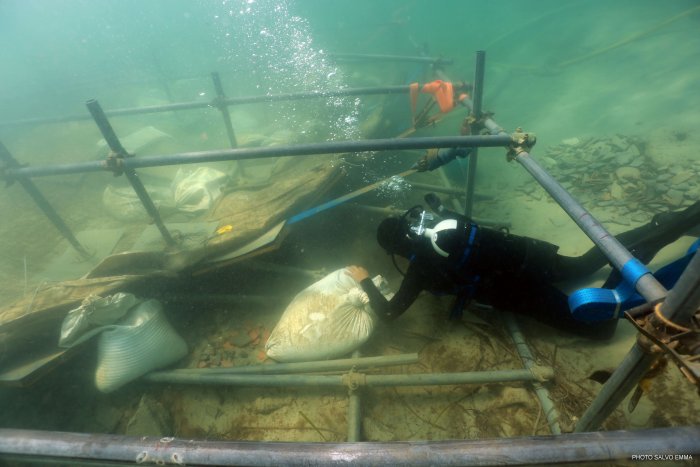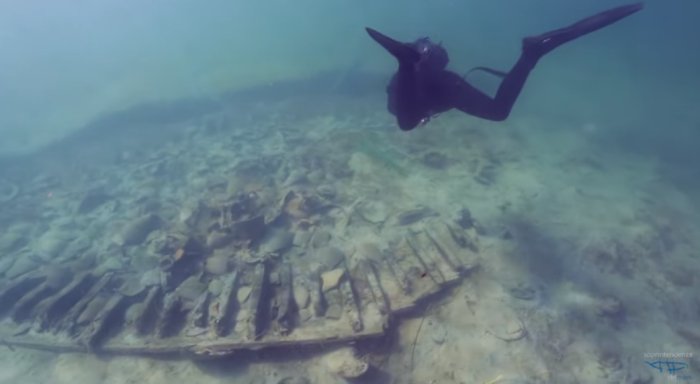Jan Bartek – AncientPages.com – A historical shipwreck has been successfully recovered from the seabed off the coast of Misiliscemi in the Trapani area, Sicily.
The 11-meter-long Roman commercial transport ship was discovered in July 2020 after a diver reported the presence of amphora fragments and wooden remains just 100 meters from the shore. After an initial survey, which allowed scientists to understand the importance of the discovery, the Superintendence of the Sea took steps to secure the site by covering it with over 100 bags filled with sand.

Roman ship Marausa 2 was recovered off the coast of Sicily. Credit: Salvo Emma
Long and careful preparations were required before scientists could launch a project to recover the ancient ship from the waters.
In 1999, a similar ship was discovered at the same place. After being recovered, the find called “Marausa 1” was exhibited in the Baglio Anselmi Museum in Marsala. Its cargo consisted of African amphorae closed by corks. These ancient jars transported dried fruits (pine nuts, hazelnuts, almonds, peaches, dried figs), olives, and, most likely wine and garum (fish sauce).
Considering its likeness and location, the current ship is thought to be its twin and was therefore given the name Marausa 2 by scientists.

Credit: Salvo Emma
“From the investigations carried out, the “Marausa 2″ could be a cargo ship (used for the transport of goods) from the 4th century AD of great scientific interest, especially for the naval construction techniques of this particular historical period,” Regione Sicilia informs.
According to Finestre Sull Arte Marausa 2 is in excellent condition, almost intact. Even after 1,700 years, the preservation state has been described as “astonishing,” recovery operations, coordinated by the Sicilian Region’s Superintendence of the Sea were complex and required cutting-edge technology.

Credit: Salvo Emma
After an initial excavation phase and pH๏τographic documentation of the site, work began to secure the wreck, protected by nets and fabric. Next, a metal structure was erected around the hull, allowing the entire vessel to be raised in a unified manner.
Historians are confident that the findings will further illuminate information about trade between Rome and the North African provinces. The amphorae carried by the ship most likely contained wine, olive oil, and other foodstuffs.

Credit: Salvo Emma
“On the Marausa 1, it must be said that it represents one of Italy’s most important underwater finds. The objects recovered and currently exhibited at the Pepoli Archaeological Museum in Trapani, particularly the ceramics, attest to the wreck’s function as an onerary ship, intended to transport foodstuffs, such as dried fruit, wine, and canned fish, contained in amphorae.
Both ships probably sank while maneuvering into the Birgi River.
Motya, Lilybaeum, and Drepanum, ports of reference at different ages in the Mediterranean routes, continue to reveal surprising archaeological discoveries that help researchers opportunity to “reconstruct fragments of our past, elements of the history of our Island, which has always been a crossroads of trade and cultures,” says the Councilor for Cultural Heritage, Francesco Paolo Scarpinato.
Raising the entire ship was possible because the timbers were still well-preserved. The cargo of amphorae and other artifacts are still intact and stored inside.
See also: More Archaeology News
All artifacts and the shipwreck were transferred to the Baglio Anselmi Museum in Marsala for initial restoration and conservation work.
The restoration work will take years to finish. Still, once it has been completed, this remarkable archaeological underwater discovery will be on permanent display, allowing the public to learn more about the ancient history of this region.
Written by Jan Bartek – AncientPages.com Staff Writer





